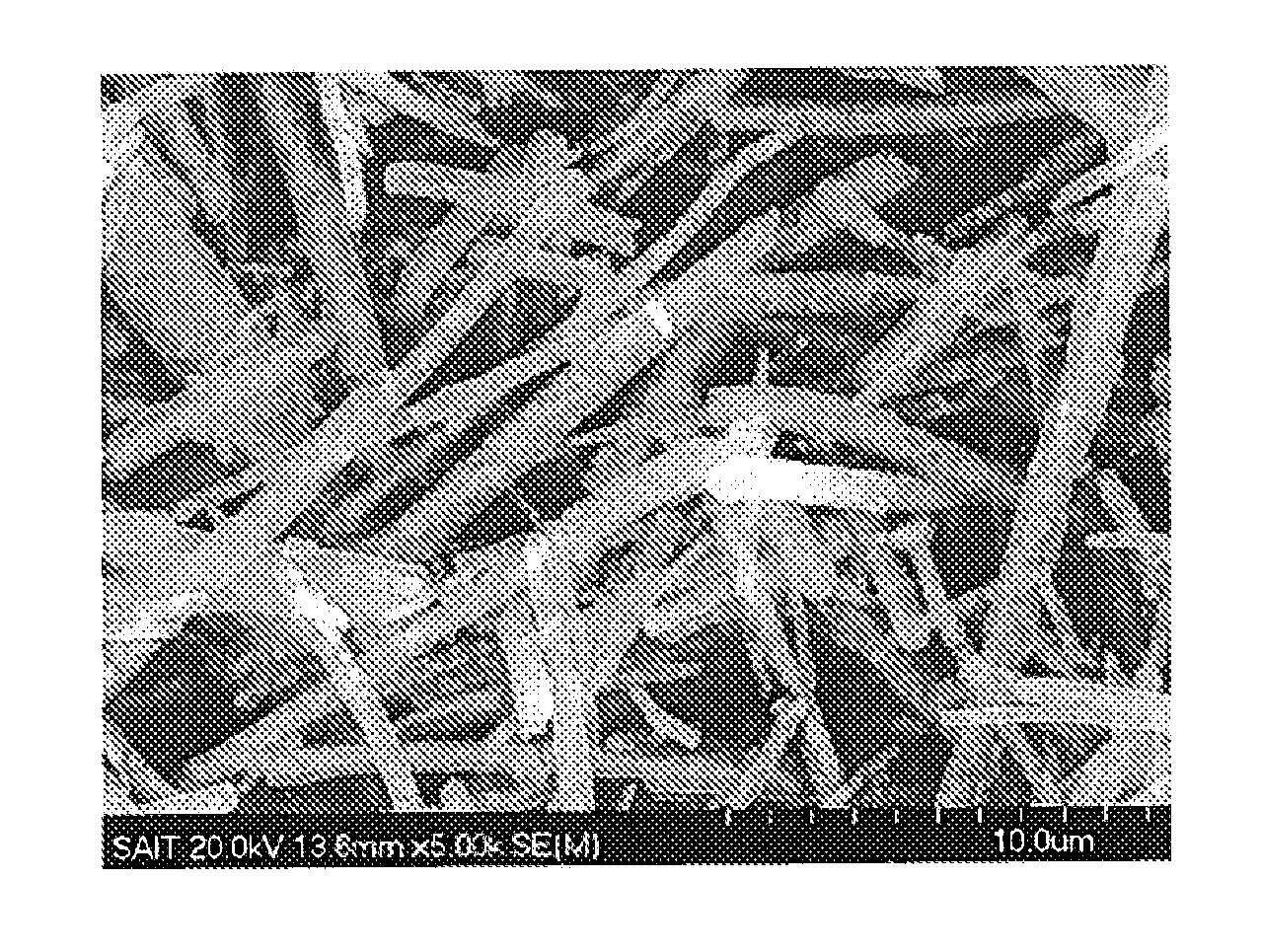Anode active material and method of preparing the same
a technology of anode active materials and active materials, which is applied in the direction of non-metal conductors, cell components, conductors, etc., can solve the problems of shortening the internal space between the anode and the cathode, affecting the charging and discharging efficiency, and a large amount of lithium on the surface, so as to improve the battery cycle characteristics
- Summary
- Abstract
- Description
- Claims
- Application Information
AI Technical Summary
Benefits of technology
Problems solved by technology
Method used
Image
Examples
example 1
[0064]19 g of cobalt acetate tetrahydrate and 10 g of trimesic acid were dissolved in 1000 mL distilled water and agitated at room temperature for 10 hours. Then, the obtained powder was filtered using a nylon filter, washed several times, and dried in an oven at 80° C. for 12 hours to obtain fibrous coordinate polymer particles. The obtained fibrous coordinate polymer particles were subjected to heat treatment under a flow of argon gas at 900° C. for 10 hours, thereby preparing fibrous carbon-cobalt composite particles. FIG. 1 is a Scanning Electron Microscope (SEM) image of the fibrous carbon-cobalt composite particles prepared according to Example 1.
Preparation of Anode Active Material
example 2
[0065]1 g of metallic silicon powder having an average particle diameter smaller than 43 μm, 0.05 g of the fibrous carbon-cobalt composite particles prepared in Example 1, and 1 g of polyvinyl alcohol (PVA) powder having a number average molecular weight of 500 were mixed, and pulverized for 30 minutes using a high-energy mechanical milling machine (e.g. SPEX 8000M device commercially available from SPEX CertiPrep Inc.). 0.05 g of carbon-cobalt composite particles were mixed in to the pulverized product, and the PVA of the resultant product was then completely carbonized by subjecting the resultant product to heat treatment under a flow of argon gas at 900° C. for 10 hours, thereby preparing the anode active material.
[0066]FIG. 2 is a SEM image of the anode active material prepared according to Example 2. The anode active material was found to have three-dimensional irregular arrays of metallic silicon powder and fibrous carbon-cobalt composite particles, as confirmed by the SEM ima...
example 3
[0069]3.3 g of the powder obtained by pulverizing the anode active material prepared according to Example 2 using a mortar and pestle, 5.7 g of graphite powder having an average particle diameter of 2 μm, and 20 g (5 wt %) of polyvinylidene difluoride (PVdF) were mixed. 5 mL N-methylpyrrolidone (NMP) was added to the mixture, and then the resultant product was stirred using a mechanical agitator for 60 minutes, thereby preparing a slurry.
[0070]The slurry was coated on a copper (Cu) current collector to a thickness of about 200 μm using a doctor blade, dried, and then dried again under vacuum at 110° C., thereby preparing an anode.
PUM
| Property | Measurement | Unit |
|---|---|---|
| particle diameter | aaaaa | aaaaa |
| temperature | aaaaa | aaaaa |
| temperature | aaaaa | aaaaa |
Abstract
Description
Claims
Application Information
 Login to View More
Login to View More - R&D
- Intellectual Property
- Life Sciences
- Materials
- Tech Scout
- Unparalleled Data Quality
- Higher Quality Content
- 60% Fewer Hallucinations
Browse by: Latest US Patents, China's latest patents, Technical Efficacy Thesaurus, Application Domain, Technology Topic, Popular Technical Reports.
© 2025 PatSnap. All rights reserved.Legal|Privacy policy|Modern Slavery Act Transparency Statement|Sitemap|About US| Contact US: help@patsnap.com



